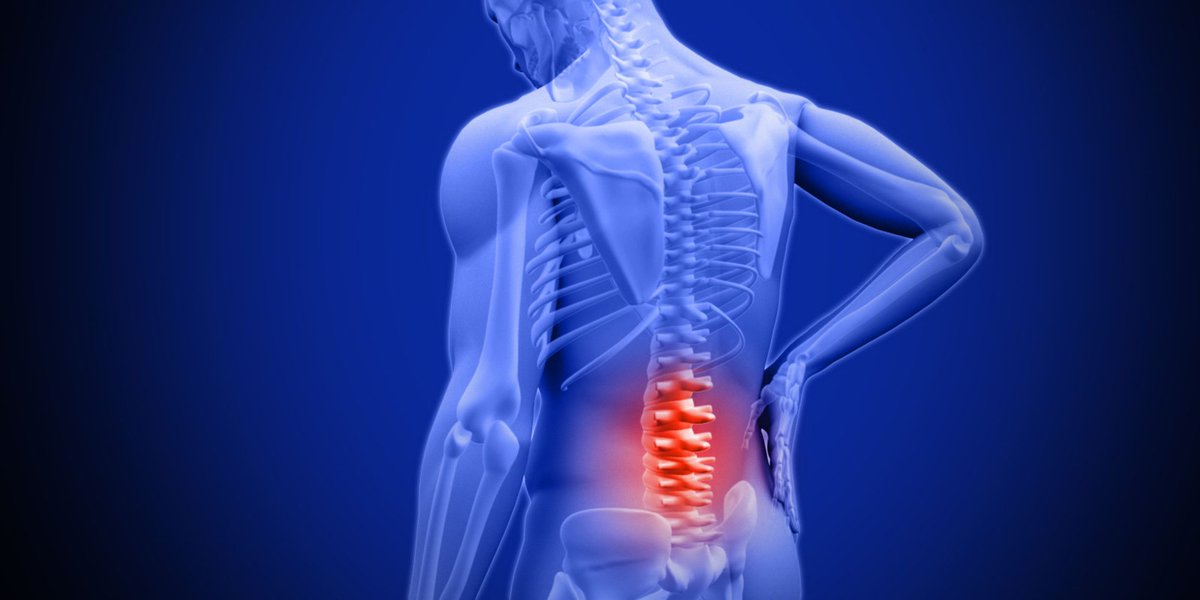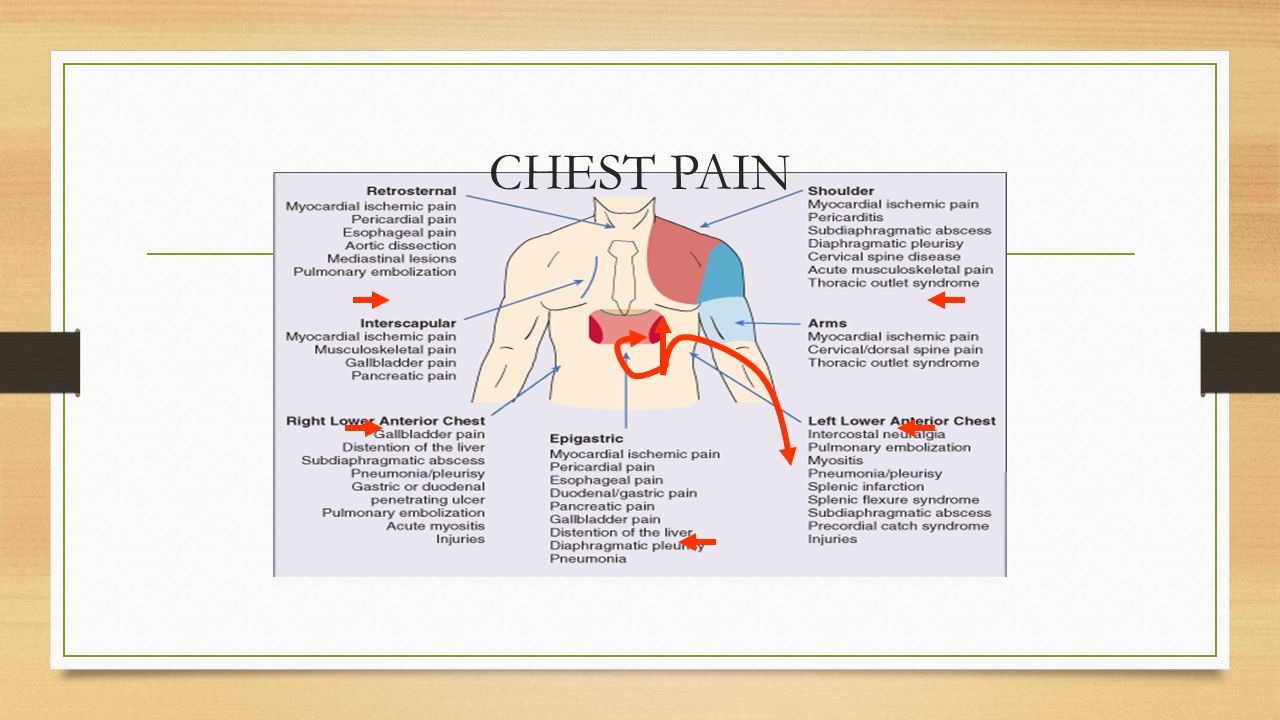Pleurisy in the back. Pleurisy: Symptoms, Causes, and Treatment of This Painful Lung Condition
What are the main symptoms of pleurisy. How is pleurisy diagnosed and treated. What causes pleurisy and who is at risk. What complications can arise from pleurisy.
What is Pleurisy and How Does it Affect the Lungs?
Pleurisy, also known as pleuritis, is an inflammatory condition affecting the pleura – the thin, double-layered membrane that surrounds the lungs and lines the chest cavity. This condition can cause significant chest pain and breathing difficulties.
The pleura consists of two layers:
- The outer layer (parietal pleura) which lines the chest wall
- The inner layer (visceral pleura) which covers the lungs
In healthy individuals, these layers are separated by a small amount of lubricating fluid, allowing the lungs to move smoothly during breathing. When pleurisy occurs, these layers become inflamed and may rub against each other, causing pain and discomfort.
Types of Pleurisy
There are two main types of pleurisy:
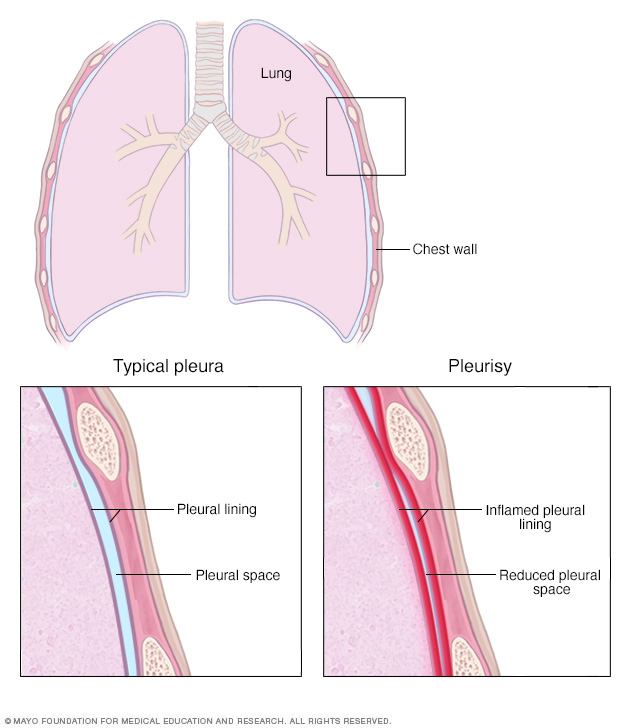
- Dry pleurisy: This occurs when there is no fluid buildup between the pleural layers.
- Wet pleurisy: Also known as pleural effusion, this type involves fluid accumulation between the pleural layers.
Understanding the type of pleurisy is crucial for proper diagnosis and treatment.
Recognizing the Symptoms: Key Indicators of Pleurisy
Identifying pleurisy symptoms early can lead to prompt treatment and faster recovery. The primary symptom of pleurisy is chest pain, which can vary in intensity and character.
What are the characteristic features of pleurisy-related chest pain? Pleurisy pain typically:
- Worsens with deep breathing, coughing, or sneezing
- May be sharp or stabbing in nature
- Can radiate to the shoulders, neck, or abdomen
- Often localizes to one area of the chest
Besides chest pain, other symptoms may include:
- Shortness of breath or rapid, shallow breathing
- Dry cough
- Fever and chills (if caused by an infection)
- General fatigue and malaise
In cases of pleural effusion, symptoms may be less severe as the fluid can reduce friction between the pleural layers. However, large fluid accumulations can lead to breathing difficulties.

Unraveling the Causes: What Triggers Pleurisy?
Pleurisy can result from various underlying conditions. Identifying the root cause is crucial for effective treatment. Common causes of pleurisy include:
Infections
Viral infections are the most frequent cause of pleurisy. These may include:
- Influenza virus
- Respiratory syncytial virus (RSV)
- Epstein-Barr virus
- Cytomegalovirus
Bacterial infections, though less common, can also lead to pleurisy. Examples include:
- Pneumonia
- Tuberculosis
- Legionnaires’ disease
Autoimmune Disorders
Several autoimmune conditions can trigger pleurisy, including:
- Lupus
- Rheumatoid arthritis
- Sj??gren’s syndrome
Other Causes
Additional factors that may lead to pleurisy include:
- Certain medications (e.g., hydralazine, procainamide)
- Chest injuries or trauma
- Lung cancer or metastatic cancer
- Pulmonary embolism
- Exposure to asbestos or other toxins
Diagnosing Pleurisy: Medical Approaches and Tests
Accurate diagnosis of pleurisy is essential for appropriate treatment. How do medical professionals diagnose pleurisy? The diagnostic process typically involves:
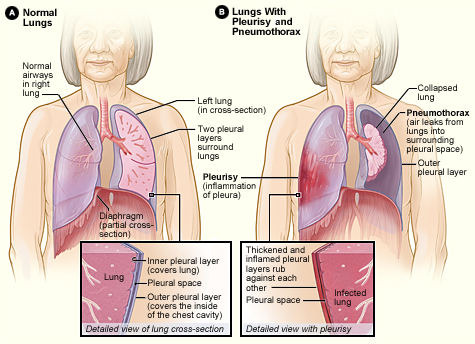
Physical Examination
During a physical exam, the doctor will:
- Listen to the patient’s lungs with a stethoscope
- Check for a characteristic rubbing sound (pleural friction rub)
- Assess chest movement during breathing
Imaging Tests
Various imaging techniques may be employed, including:
- Chest X-ray: To visualize the lungs and check for fluid buildup
- CT scan: For a more detailed view of the chest and lungs
- Ultrasound: To detect pleural effusion and guide fluid drainage if necessary
Blood Tests
Blood tests can help identify underlying causes and may include:
- Complete blood count (CBC) to check for infection
- Tests for autoimmune markers
- D-dimer test to rule out pulmonary embolism
Pleural Fluid Analysis
If pleural effusion is present, a sample of the fluid may be analyzed to determine its nature (transudative or exudative) and identify potential pathogens.
Biopsy
In some cases, a small tissue sample from the pleura may be taken for microscopic examination to rule out cancer or other specific conditions.

Treatment Approaches: Managing Pleurisy Effectively
The treatment of pleurisy focuses on addressing the underlying cause and managing symptoms. What are the primary treatment strategies for pleurisy?
Treating the Underlying Cause
Depending on the identified cause, treatment may involve:
- Antibiotics for bacterial infections
- Antiviral medications for certain viral infections
- Immunosuppressants for autoimmune-related pleurisy
- Anticoagulants for pulmonary embolism
Pain Management
To alleviate pain and discomfort, doctors may recommend:
- Nonsteroidal anti-inflammatory drugs (NSAIDs) like ibuprofen or naproxen
- Acetaminophen for pain relief
- In severe cases, prescription pain medications may be considered
Managing Pleural Effusion
If significant fluid accumulation is present, treatment may include:
- Thoracentesis: A procedure to drain excess fluid
- Pleurodesis: A technique to prevent fluid reaccumulation in recurrent cases
Supportive Care
Additional measures to support recovery include:

- Rest and avoiding strenuous activities
- Using a pillow to support the chest when coughing or breathing deeply
- Breathing exercises to prevent lung collapse
Complications and Long-term Outlook: What to Expect with Pleurisy
While many cases of pleurisy resolve without significant issues, complications can occur. What are the potential complications of pleurisy?
Pleural Adhesions
Inflammation can lead to the formation of scar tissue between the pleural layers, potentially restricting lung movement.
Empyema
In cases of bacterial infection, pus may accumulate in the pleural space, requiring drainage and antibiotic treatment.
Pneumothorax
Air can sometimes leak into the pleural space, causing lung collapse.
Systemic Inflammation
In rare cases, untreated pleurisy can lead to widespread inflammation and organ dysfunction.
The long-term outlook for pleurisy patients generally depends on the underlying cause. Many individuals recover fully with appropriate treatment, while those with chronic conditions may require ongoing management.
:max_bytes(150000):strip_icc()/pain-with-deep-breathing-4129383-5c70220546e0fb00014361f6.png)
Prevention and Risk Factors: Minimizing Your Chances of Developing Pleurisy
While not all cases of pleurisy can be prevented, understanding risk factors and taking preventive measures can help reduce the likelihood of developing this condition.
Risk Factors
Certain factors may increase the risk of developing pleurisy:
- Age: Pleurisy can affect people of all ages, but it’s more common in older adults
- Smoking: Increases susceptibility to respiratory infections
- Underlying health conditions: Such as lung disease, heart disease, or autoimmune disorders
- Occupational exposure: To asbestos or other toxic substances
Preventive Measures
To reduce the risk of pleurisy, consider the following steps:
- Maintain good overall health through regular exercise and a balanced diet
- Practice good hygiene to prevent infections
- Get vaccinated against influenza and pneumococcal pneumonia
- Quit smoking and avoid exposure to secondhand smoke
- Use appropriate protective equipment in hazardous work environments
- Manage underlying health conditions effectively
By understanding pleurisy, its symptoms, causes, and treatment options, individuals can be better prepared to recognize and address this condition. Early diagnosis and appropriate management are key to minimizing complications and ensuring a smooth recovery. If you experience persistent chest pain or breathing difficulties, it’s crucial to seek medical attention promptly for proper evaluation and care.
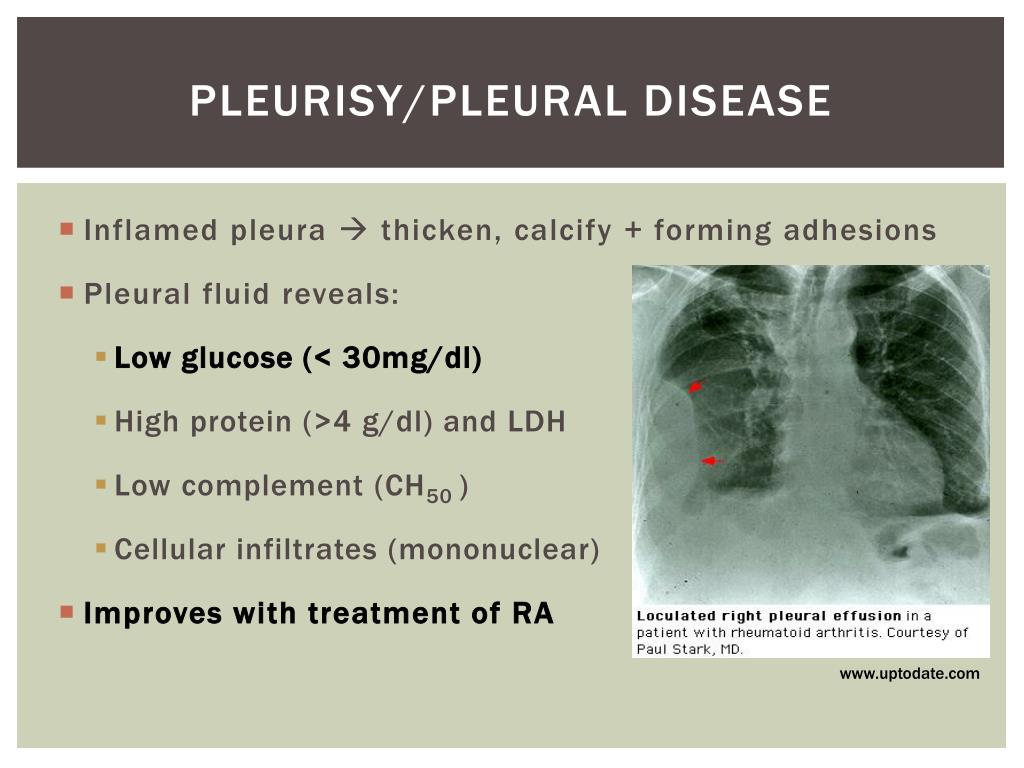
Living with Pleurisy: Coping Strategies and Lifestyle Adjustments
Dealing with pleurisy can be challenging, but there are several strategies to help manage symptoms and improve quality of life. How can individuals cope with pleurisy in their daily lives?
Pain Management Techniques
Beyond medication, consider these pain relief methods:
- Apply heat or cold packs to the affected area
- Practice relaxation techniques like deep breathing or meditation
- Use proper posture to reduce strain on the chest
Breathing Exercises
Gentle breathing exercises can help maintain lung function:
- Pursed-lip breathing
- Diaphragmatic breathing
- Incentive spirometry (under medical guidance)
Lifestyle Modifications
Making certain changes can support recovery and prevent recurrence:
- Avoid exposure to irritants like smoke or air pollution
- Maintain a healthy diet rich in anti-inflammatory foods
- Stay hydrated to help thin mucus and ease breathing
- Get adequate rest and sleep
Emotional Support
Dealing with chronic pain can be emotionally taxing. Consider:

- Joining support groups for individuals with respiratory conditions
- Seeking counseling or therapy if needed
- Engaging in stress-reducing activities like gentle yoga or tai chi
By incorporating these strategies, individuals with pleurisy can better manage their condition and improve their overall well-being. It’s important to work closely with healthcare providers to develop a personalized management plan that addresses individual needs and circumstances.
Pleurisy | Cedars-Sinai
Not what you’re looking for?
Overview
Pleurisy, also known as pleuritis, is swelling of the thin lining around the chest cavity and lungs, also known as the pleura. This lining creates a smooth surface so the lungs glide easily in the chest while breathing. When the lining swells, the lungs rub painfully against the chest, causing swelling and chest pain.
In some cases, fluid can collect between the pleura. This is called pleural effusion. When there is no fluid, the condition is called dry pleurisy.
Symptoms
Usually the first sign of pleurisy is a sudden chest pain. The pain may be very mild or very severe. Sometimes the pain is only felt while breathing deeply or coughing. Other times, the pain may be felt all the time and get worse with deep breathing or coughing. Usually the pain is felt in the chest wall over the area that’s inflamed. You might also feel pain in the upper abdominal area, neck, back, and shoulders.
You might also feel pain in the upper abdominal area, neck, back, and shoulders.
Because inhaling deeply hurts, a person with pleurisy tends to breathe quickly and shallowly. On the side where the pain is, the muscles of the chest move less than those on the other side. If fluid builds up between the layers of the pleura, the chest pain may go away. Large quantities of fluid can make expanding one or both lungs difficult.
Other symptoms may include:
- Fever
- Cough
- Shortness of breath
- Rapid breathing
Causes and Risk Factors
Irritation of the pleura can be caused by:
- Viruses
- Bacterial infections
- Cancer
- Inhaling asbestos or other toxic substances
- The use of certain medications
- Some types of autoimmune diseases, such as lupus or rheumatoid arthritis
Diagnosis
Diagnosis of pleurisy usually starts with a physical exam. Because the pain tied to pleurisy is distinct, it is often easy for the physician to diagnose. Using a stethoscope, the doctor may hear a squeaky, rubbing sound.
Because the pain tied to pleurisy is distinct, it is often easy for the physician to diagnose. Using a stethoscope, the doctor may hear a squeaky, rubbing sound.
Chest X-rays and CT scans are often used to see an image of what is going on inside the lungs and chest. These tests help show if fluid is building up in the lungs. They will also show if the lungs are filling up with air as much as possible.
Other imaging tests may be used, such as an ultrasound or electrocardiogram, to rule out heart disease.
If fluid has begun to build up in the chest or lungs, the doctor may take a test sample of it. This will help determine the cause of the pleurisy and rule out the possibility of cancer.
A biopsy of a small sample of tissue may also be done to rule out the possibility of cancer. To do this, a needle will be used to remove a small tissue sample to be examined under a microscope.
A blood test to detect lupus or rheumatoid arthritis may also be performed.
Treatment
Treatment for pleurisy depends on what caused the condition.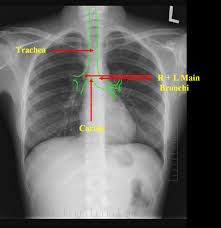 The experts at Cedars-Sinai’s Advanced Lung Disease Program can help you find the best treatment plan.
The experts at Cedars-Sinai’s Advanced Lung Disease Program can help you find the best treatment plan.
Antibiotics may be prescribed for infections caused by bacteria. If a virus causes the pleurisy, no treatment will be given. If the cause is lupus or an autoimmune disease, corticosteroids often quickly cure the pleurisy. These drugs suppress the immune system, which stops the swelling in the lining.
Nonsteroidal anti-inflammatory drugs, such as aspirin or ibuprofen, help relieve the chest pain. Codeine and other stronger pain relievers should not be used. These medicines can stop you from coughing. Coughing is important because it stops the lungs from collapsing and helps prevent pneumonia.
Holding a pillow against the part of the chest that hurts while coughing or breathing deeply can be helpful. Wrapping the chest in wide, elastic bandages can help relieve severe pain. Wrapping the chest also makes it harder to breathe and increases the risk of a collapsed lung or pneumonia.
© 2000-2021 The StayWell Company, LLC. All rights reserved. This information is not intended as a substitute for professional medical care. Always follow your healthcare professional’s instructions.
Not what you’re looking for?
Causes, Symptoms, Diagnosis, Treatment, and Complications
What Is Pleurisy?
Pleurisy is a type of chest pain. It affects a part of your body called the pleura.
The pleura is a thin layer of tissue that wraps your lungs. They fit snugly within your chest, which is lined with another thin layer of pleura.
These layers keep your bare lungs from rubbing against the wall of your chest cavity every time you breathe in. There’s a bit of fluid within the narrow space between the two layers of pleura to keep everything moving smoothly.
When you’re healthy, you never notice your pleura at work. But if your pleura has a problem, you’ll feel it.
When the pleurae are swollen and inflamed, they rub against each other in a very painful way each time your lungs expand.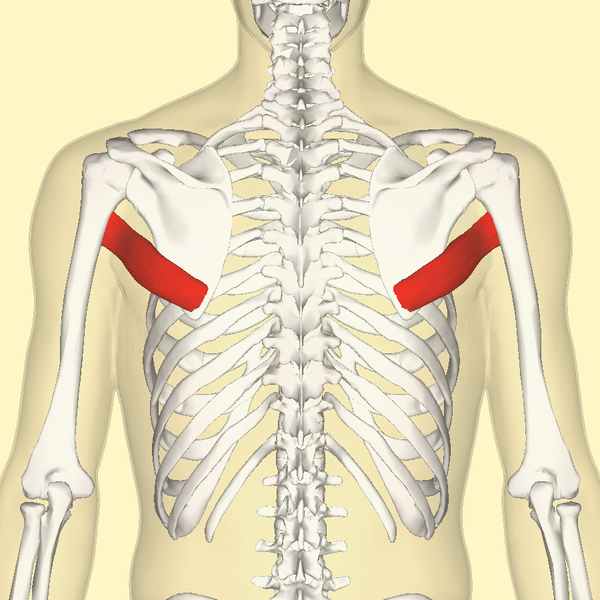 When you inhale deeply, cough, sneeze, or laugh, you’ll probably feel a sharp, stabbing pain in the area that’s affected.
When you inhale deeply, cough, sneeze, or laugh, you’ll probably feel a sharp, stabbing pain in the area that’s affected.
Most of the time, pleurisy happens because of an infection. If your doctor treats your infection, that can make it — and the pain — go away.
Pleurisy Causes
Bacterial infections such as pneumonia often cause pleurisy. It can also be caused by a virus such as the flu or by a fungus.
Other things that can cause pleurisy are:
Pleurisy Symptoms
Chest pain from pleurisy has signs that can make it easy for your doctor to know that you have it. You’re likely to notice these things:
Pleurisy Diagnosis
Your doctor will ask you to describe the type of pain you feel when you breathe or cough, and they’ll ask whether it gets better or worse as the day goes on. They’ll listen to your lungs with a stethoscope to see if they’re making any strange noises. (Doctors often can hear the pleurae rubbing against each other.)
You may also need to have tests, such as:
- Imaging.
 If your doctor wants to rule out other problems, they may send you for an X-ray, a CT scan, or an ultrasound. These images can show if it’s pleurisy that’s causing your pain.
If your doctor wants to rule out other problems, they may send you for an X-ray, a CT scan, or an ultrasound. These images can show if it’s pleurisy that’s causing your pain. - Blood tests. These may show if an infection is the culprit. It may also reveal if you have an autoimmune disease like lupus or another problem.
- EKG. An electrocardiogram of your heart might show that your chest pain is caused by a heart problem, not pleurisy.
- Thoracentesis. A technician looks at a sample of your pleural fluid under a microscope for problems like infections or cancer.
- Thoracoscopy. Your doctor uses a thin, flexible tube called a thoracoscope to look inside your chest cavity.
Pleurisy Treatment
In order to treat your pleurisy the right way, your doctor needs to know what’s causing it:
- If it’s bacteria, antibiotics can make you better.

- If it’s a fungus, they’ll probably give you an antifungal drug.
- If it’s a virus, you’ll get better on your own in a few days or weeks.
Some people with pleurisy have too much fluid built up between their two layers of pleura. Your doctor may need to remove some of the fluid. They may insert a thin needle into the space between your pleura to do this.
Painkillers and steroid medications can help while you’re getting better.
If coughing hurts too much, your doctor might prescribe medication (codeine) that can make you cough less.
You might feel better if you lie on the side that’s causing you pain. As the pain starts to go away, try to breathe more deeply and cough up any phlegm you have.
Pleurisy Complications
Complications of pleurisy can be serious. They include:
- Lungs that are blocked or can’t expand the way they should (atelectasis)
- Pus in your pleural cavity (empyema)
- A sudden drop in blood flow (shock)
- A dangerous reaction to infection (sepsis)
Inflammation can also make fluid build up in your pleural cavity.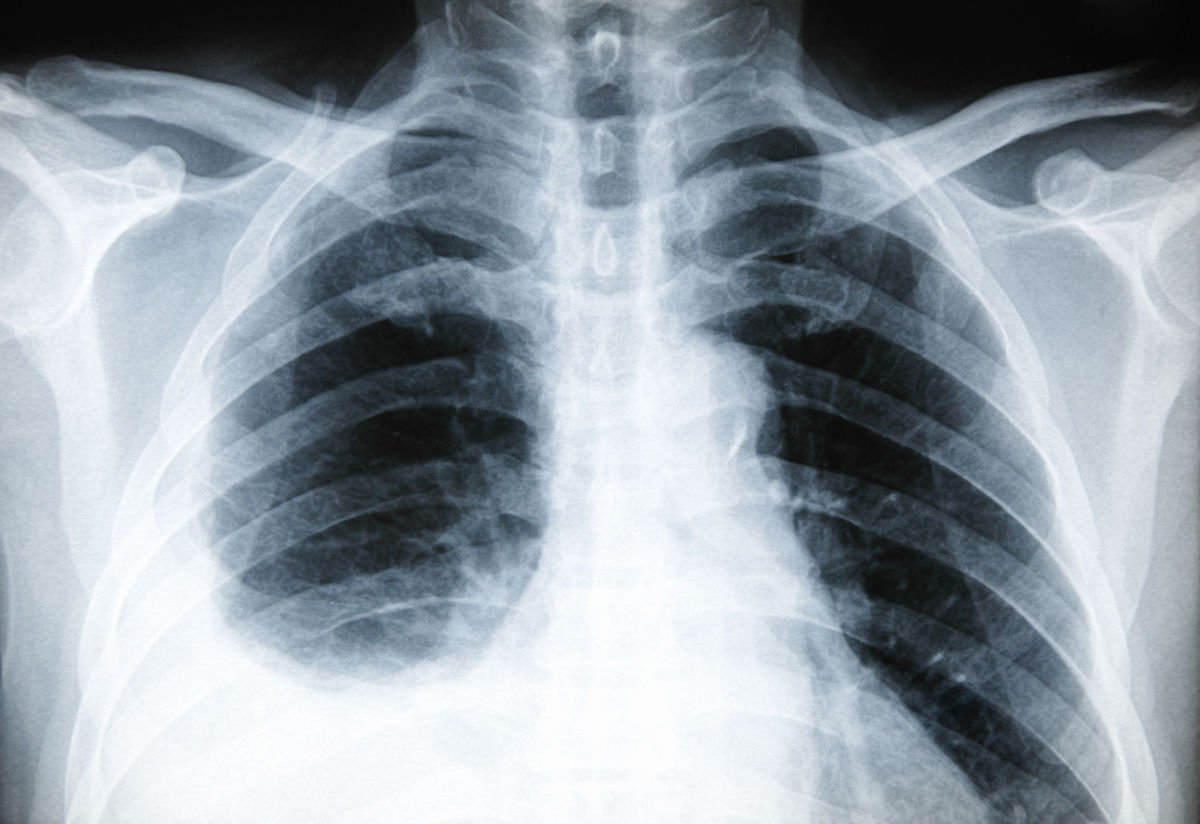 This is called pleural effusion. You might have less pain, but it can be hard for you to breathe. Your doctor might give you medications like diuretics, or you might have a procedure to drain the fluid.
This is called pleural effusion. You might have less pain, but it can be hard for you to breathe. Your doctor might give you medications like diuretics, or you might have a procedure to drain the fluid.
Pleurisy – NHS
Pleurisy is inflammation of the tissue between the lungs and ribcage (pleura).
Symptoms of pleurisy
The most common symptom of pleurisy is a sharp chest pain when you breathe. You sometimes also feel pain in your shoulder.
The pain may be worse when you cough, sneeze or move around. It may be relieved by taking shallow breaths.
Other symptoms include shortness of breath and a dry cough.
When to see a GP
See a GP if you have sharp stabbing chest pains when you breathe or other symptoms of pleurisy.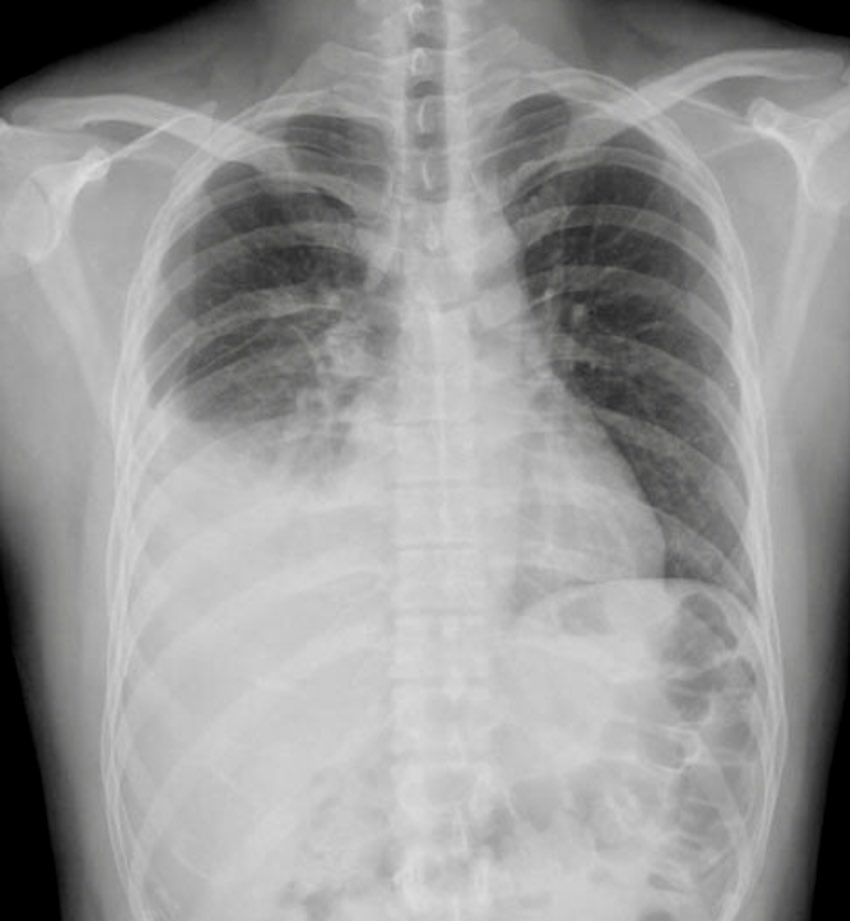
Pleurisy can usually be diagnosed based on your symptoms.
The GP will listen to your chest. A distinctive dry, crunching sound may suggest you have pleurisy.
Further tests may be needed to find out what’s causing pleurisy and how severe it is.
These tests include:
Get immediate medical help if you have severe chest pain, particularly if you also have other symptoms, such as coughing up blood, feeling sick or sweating.
Treating pleurisy
Treatment for pleurisy usually involves relieving the pain and, in some cases, treating the underlying cause.
If treated promptly, pleurisy often gets better without causing any lasting lung damage.
Treating chest pain
Taking non-steroidal anti-inflammatory drugs (NSAIDs), such as ibuprofen, often eases the pain.
If NSAIDs are unsuitable for you or do not work, your doctor may prescribe another painkiller.
Try different positions when resting to see which one is most comfortable for you. It may seem strange, but often lying on the side of your chest that hurts helps reduce the pain.
Treating the underlying cause
If your pleurisy is caused by a viral infection, it’ll usually get better on its own after a few days.
If it’s caused by a bacterial infection, you’ll need antibiotics. Depending on the severity of your symptoms, this may be either tablets or injections.
If your symptoms are particularly severe or you’re already in poor health, you may need to be admitted to hospital.
Treating pleural effusion
Sometimes pleurisy causes a build-up of excess fluid around the lungs called pleural effusion.
Pleural effusion can lead to shortness of breath that gets progressively worse.
This is more likely if pleurisy is caused by pulmonary embolism or a bacterial infection.
If pleural effusion does not clear up as your pleurisy is treated or you’re very short of breath, the fluid may need to be drained by inserting a needle or tube through the chest wall.
This can be done under general anaesthetic or local anaesthetic.
You may need to stay in hospital for a few days if a lot of fluid has to be drained away.
What causes pleurisy?
Pleurisy is usually caused by a virus, such as the flu virus.
Less common causes include:
Community content from HealthUnlocked
Page last reviewed: 17 April 2020
Next review due: 17 April 2023
Pleurisy | Sparrow
You’re likely to start by seeing your family doctor. However, when you call to set up your appointment, you might be urged to seek immediate medical care if you are experiencing severe, unexplained chest pain.
However, when you call to set up your appointment, you might be urged to seek immediate medical care if you are experiencing severe, unexplained chest pain.
You may want to bring a family member or friend along, if possible, to help you remember questions to ask and what your doctor said.
Here’s some information to help you get ready for your appointment, and what to expect from your doctor.
What you can do
You can prepare a list that includes:
- Details of your symptoms, including where your chest pain starts and how far it spreads, as well as other signs and symptoms, such as fever, shortness of breath or weight loss.
- Key medical information, including recent hospitalizations and any medical conditions you have. Also note whether family members — especially children — or close friends have recently been sick.
- Medications you’re taking, including prescription and over-the-counter drugs, vitamins, herbs or other supplements, and the dosages.

- Key personal information, including recent travel abroad and major life changes. Your doctor might also be interested in your work history, including possible environmental exposure to asbestos.
- Questions for your doctor.
Questions to ask your doctor
Questions may include:
- What do you think is the underlying cause of my symptoms?
- What kinds of diagnostic tests or procedures do I need, if any?
- What treatment approach do you recommend?
- How soon after I begin treatment can I expect to feel better?
- Are there self-care steps I can take to improve my discomfort?
- Do you recommend that I stay home from work or school? For how long?
- Will it help if I stop smoking?
- Am I at risk of long-term complications from this condition?
- I have other health conditions. How can I best manage them together?
Don’t hesitate to ask other questions during your appointment.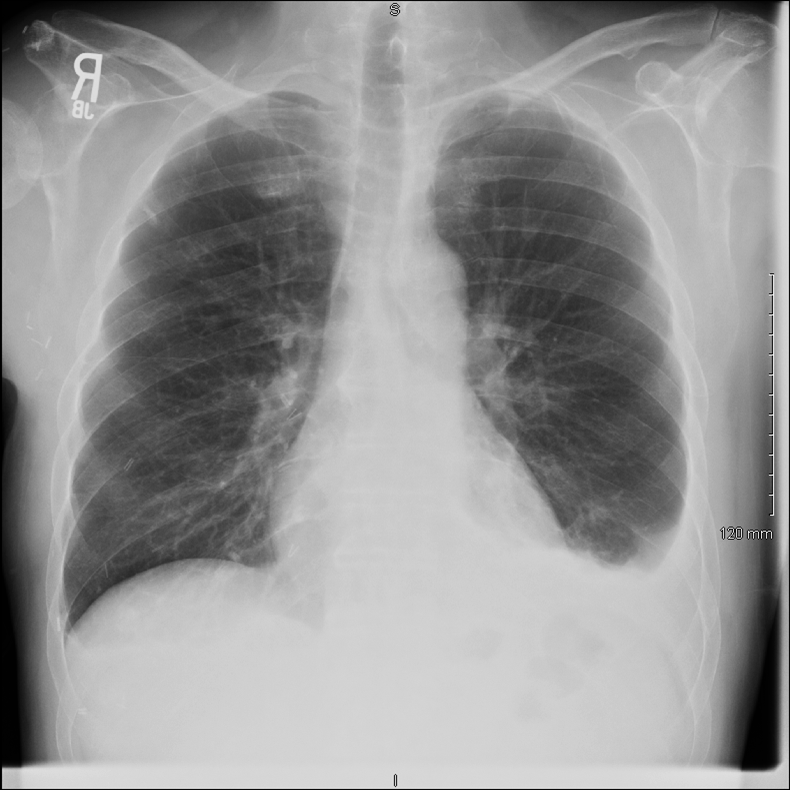
What to expect from your doctor
Be ready to answer questions your doctor might ask:
- How would you describe your symptoms?
- What, if anything, seems to improve or worsen your symptoms?
- Have you been diagnosed with or treated for any other health conditions?
- Have you recently traveled?
- Have you been involved in any work, projects or hobbies over the years that might have exposed you to asbestos?
- Do or did you smoke? If so, how much and for how long?
- Have you recently noticed swollen and tender joints or rashes?
Your doctor will ask additional questions based on your responses, symptoms and needs. Preparing and anticipating questions will help you make the most of your time with the doctor.
Pleuritic Chest Pain: Sorting Through the Differential Diagnosis
1. Metlay JP,
Kapoor WN,
Fine MJ.
Does this patient have community-acquired pneumonia? Diagnosing pneumonia by history and physical examination. JAMA.
JAMA.
1997;278(17):1440–1445….
2. Frasca A,
Smeraglia R,
Tarro G,
et al.
Association between viral infection and pleuropericarditis: a study of a case list of pleurisy and pericarditis. Boll Ist Sierotor Milan.
1980;59(2):112–120.
3. Kass SM,
Williams PM,
Reamy BV.
Pleurisy. Am Fam Physician.
2007;75(9):1357–1364.
4. Nadal JA, Murray JF, Mason RJ. Textbook of Respiratory Medicine. 4th ed. Philadelphia, Pa.: Saunders-Elsevier; 2005.
5. Tingle LE,
Molina D,
Calvert CW.
Acute pericarditis. Am Fam Physician.
2007;76(10):1509–1514.
6. Marinella MA.
Electrocardiographic manifestations and differential diagnosis of acute pericarditis. Am Fam Physician.
1998;57(4):699–704.
7. Sahn SA,
Heffner JE.
Spontaneous pneumothorax. N Engl J Med.
2000;342(12):868–874.
8. Perrier A,
Roy PM,
Aujesky D,
et al.
Diagnosing pulmonary embolism in outpatients with clinical assessment, d-dimer measurement, venous ultrasound, and helical computed tomography: a multicenter management study. Am J Med.
2004;116(5):291–299.
9. Gavin-Burton S. Pleuritic chest pain and pleurisy. Essential Evidence Plus and AHFS DI Essentials. http://online.statref.com/Document.aspx?fxId=622&docId=1382 [subscription required]. Accessed February 21, 2016.
10. Lerner AD, Feller-Kopma D. Disorders of the pleura. In: Singh AK, ed. Scientific American Medicine: Pulmonary and Critical Care Medicine. http://online.statref.com/Document.aspx?fxId=48&docId=3533 [subscription required]. Accessed January 13, 2017.
11. Hogg K,
Dawson D,
Mackway-Jones K.
Outpatient diagnosis of pulmonary embolism: the MIOPED (Manchester Investigation Of Pulmonary Embolism Diagnosis) study. Emerg Med J.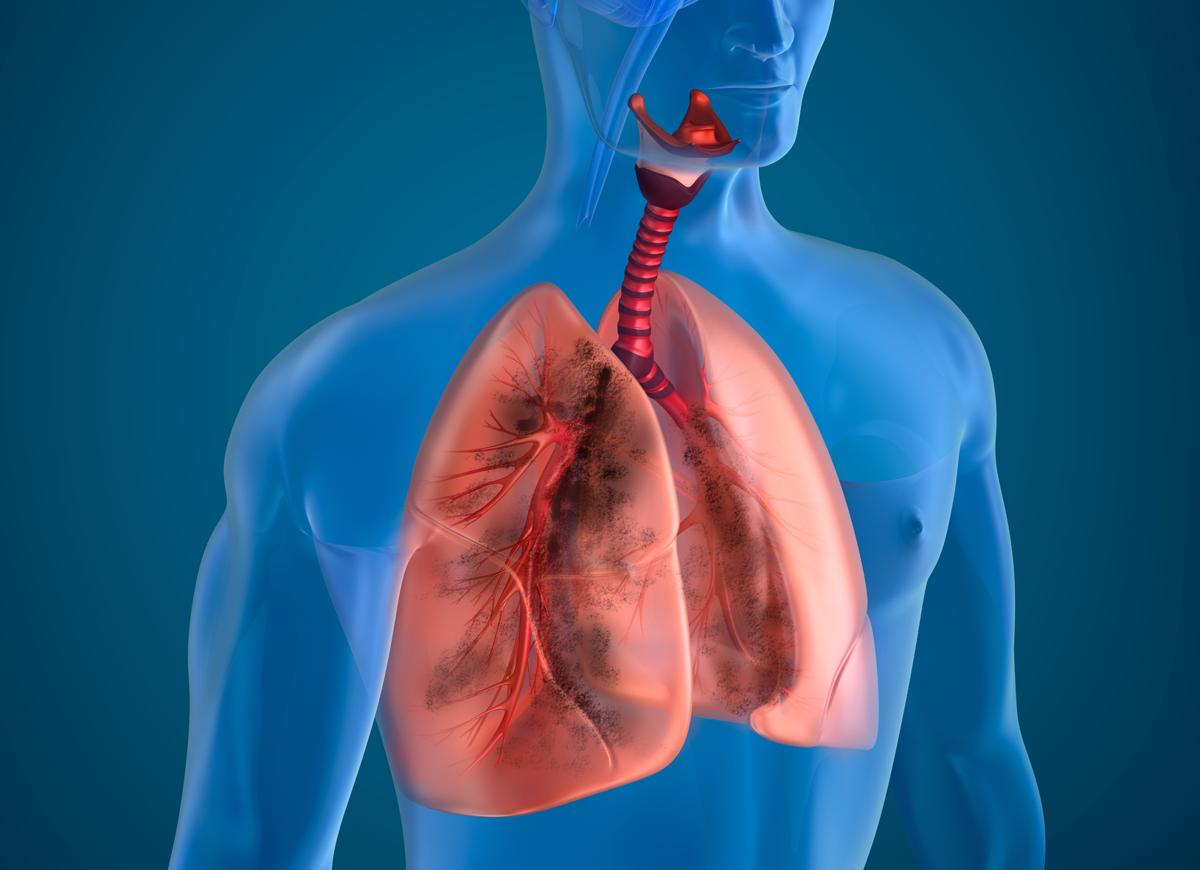
2006;23(2):123–127.
12. Hull RD,
Raskob GE,
Carter CJ,
et al.
Pulmonary embolism in outpatients with pleuritic chest pain. Arch Intern Med.
1988;148(4):838–844.
13. Courtney DM,
Kline JA,
Kabrhel C,
et al.
Clinical features from the history and physical examination that predict the presence or absence of pulmonary embolism in symptomatic emergency department patients: results of a prospective, multicenter study. Ann Emerg Med.
2010;55(4):307–315.e1.
14. Wilbur J,
Shian B.
Diagnosis of deep venous thrombosis and pulmonary embolism. Am Fam Physician.
2012;86(10):913–919.
15. Bösner S,
Haasenritter J,
Becker A,
et al.
Ruling out coronary artery disease in primary care: development and validation of a simple prediction rule. CMAJ.
2010;182(12):1295–1300.
16. McConaghy JR,
Oza RS.
Outpatient diagnosis of acute chest pain in adults. Am Fam Physician.
2013;87(3):177–182.
17. Reichlin T,
Cullen L,
Parsonage WA,
et al.
Two-hour algorithm for triage toward rule-out and rule-in of acute myocardial infarction using high-sensitivity cardiac troponin T. Am J Med.
2015;128(4):369–379.e4.
18. Reichlin T,
Twerenbold R,
Wildi K,
et al.
Prospective validation of a 1-hour algorithm to rule-out and rule-in acute myocardial infarction using a high-sensitivity cardiac troponin T assay. CMAJ.
2015;187(8):E243–E252.
19. Hiratzka LF,
Bakris GL,
Beckman JA,
et al.;
American College of Cardiology Foundation/American Heart Association Task Force on Practice Guidelines; American Association for Thoracic Surgery; American College of Radiology; American Stroke Association; Society of Cardiovascular Anesthesiologists; Society for Cardiovascular Angiography and Interventions; Society of Interventional Radiology; Society of Thoracic Surgeons; Society for Vascular Medicine.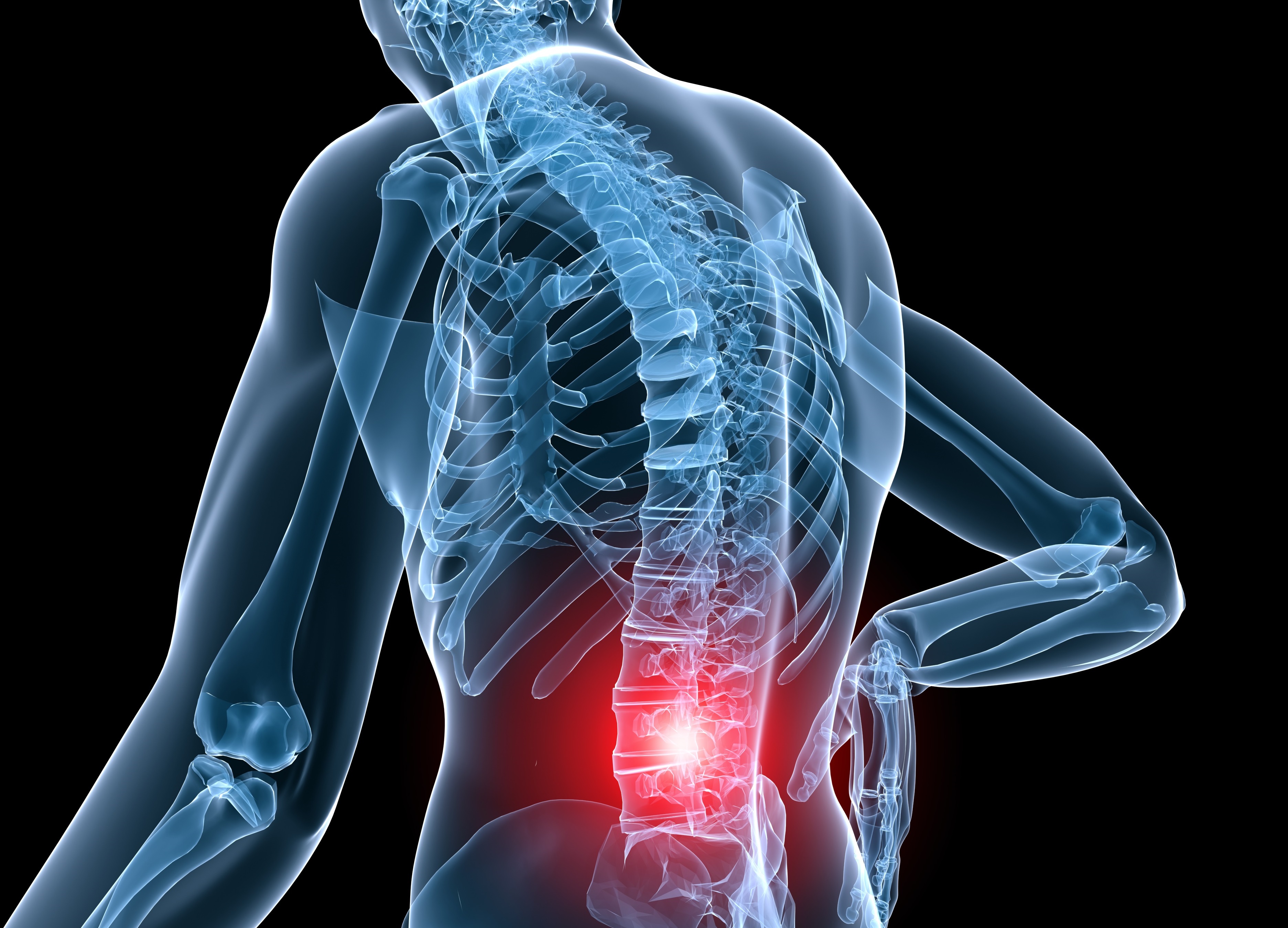
2010 ACCF/AHA/AATS/ACR/ASA/SCA/SCAI/SIR/STS/SVM guidelines for the diagnosis and management of patients with thoracic aortic disease [published correction appears in J Am Coll Cardiol. 2013;62(11):1039–1040]. J Am Coll Cardiol.
2010;55(14):e27–e129.
20. Bungeţianu G,
Galbenu P,
Petrescu A,
et al.
Contributions to the study of the etiology of serofibrinous pleurisy in Romania, under the present epidemiological conditions. Evaluation of the etiological role of viruses. Virologie.
1984;35(1):11–19.
21. Harley RA.
Pathology of pleural infections. Semin Respir Infect.
1988;3(4):291–297.
22. Swap CJ,
Nagurney JT.
Value and limitations of chest pain history in the evaluation of patients with suspected acute coronary syndromes [published correction appears in JAMA. 2006;295(19):2250]. JAMA.
2005;294(20):2623–2629.
23. Lanham DA,
Taylor AN,
Chessell SJ,
Lanham JG.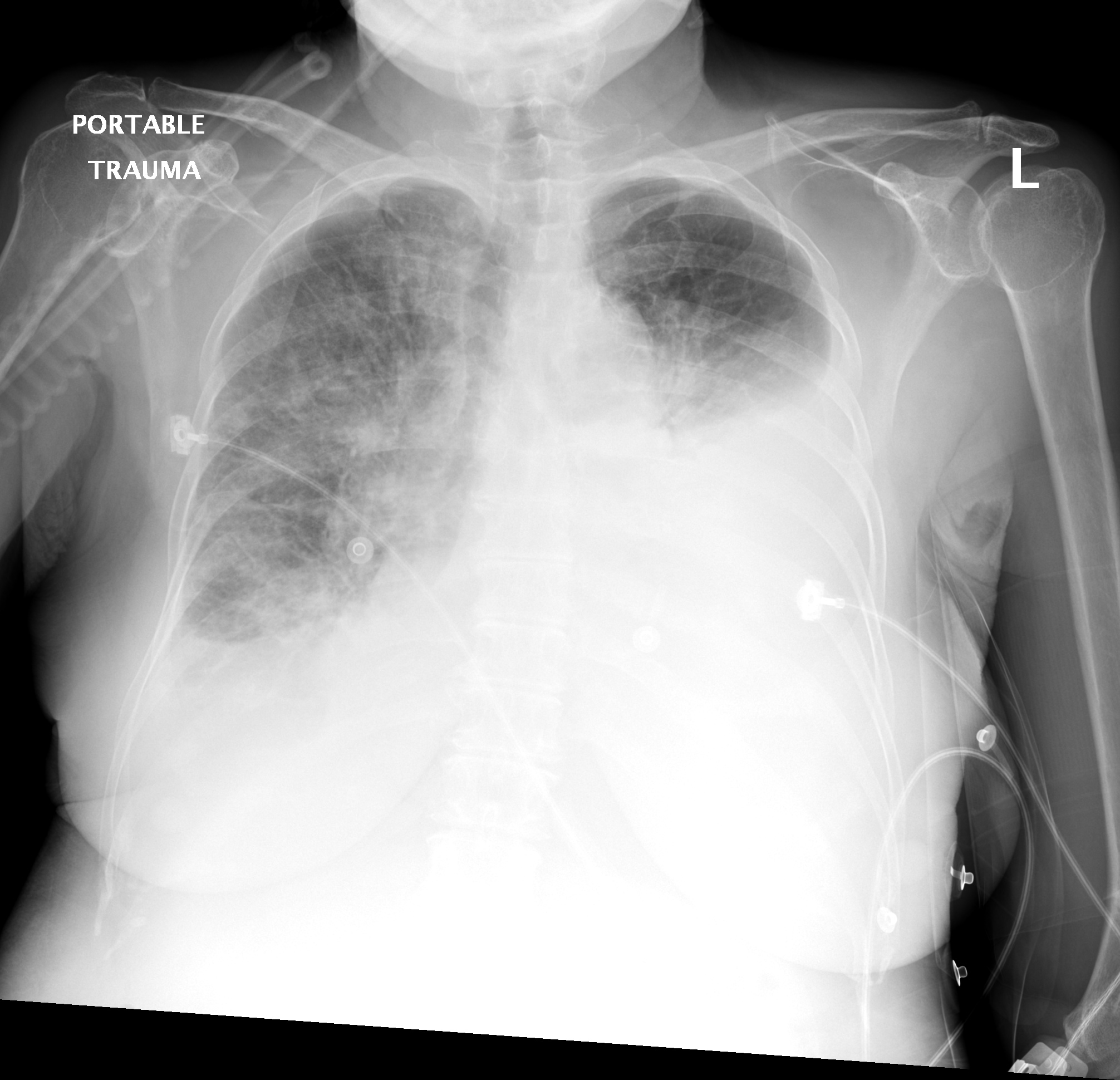
Non-cardiac chest pain: a clinical assessment tool. Br J Hosp Med (Lond).
2015;76(5):296–300.
24. Miniati M,
Prediletto R,
Formichi B,
et al.
Accuracy of clinical assessment in the diagnosis of pulmonary embolism. Am J Respir Crit Care Med.
1999;159(3):864–871.
25. Saguil A,
Wyrick K,
Hallgren J.
Diagnostic approach to pleural effusion. Am Fam Physician.
2014;90(2):99–104.
26. Light RW.
Clinical practice. Pleural effusion. N Engl J Med.
2002;346(25):1971–1977.
27. Ding W,
Shen Y,
Yang J,
He X,
Zhang M.
Diagnosis of pneumothorax by radiography and ultrasonography: a meta-analysis. Chest.
2011;140(4): 859–866.
28. Volpicelli G,
Cardinale L,
Berchialla P,
Mussa A,
Bar F,
Frascisco MF.
A comparison of different diagnostic tests in the bedside evaluation of pleuritic pain in the ED. Am J Emerg Med.
Am J Emerg Med.
2012;30(2):317–324.
29. Lange RA,
Hillis LD.
Clinical practice. Acute pericarditis [published correction appears in N Engl J Med. 2005;352(11):1163]. N Engl J Med.
2004;351(21):2195–2202.
30. Wells PS,
Anderson DR,
Rodger M,
et al.
Excluding pulmonary embolism at the bedside without diagnostic imaging: management of patients with suspected pulmonary embolism presenting to the emergency department by using a simple clinical model and d-dimer. Ann Intern Med.
2001;135(2):98–107.
31. Kline JA,
Courtney DM,
Kabrhel C,
et al.
Prospective multicenter evaluation of the pulmonary embolism rule-out criteria. J Thromb Haemost.
2008;6(5):772–780.
32. Lucassen WA,
Douma RA,
Toll DB,
Büller HR,
van Weert HC.
Excluding pulmonary embolism in primary care using the Wells-rule in combination with a point-of care d-dimer test: a scenario analysis. BMC Fam Pract.
BMC Fam Pract.
2010;11:64.
33. Le Gal G,
Righini M,
Roy PM,
et al.
Prediction of pulmonary embolism in the emergency department: the revised Geneva score. Ann Intern Med.
2006;144(3):165–171.
34. Leung AN.
Pulmonary tuberculosis: the essentials. Radiology.
1999;210(2):307–322.
35. American College of Emergency Physicians Clinical Policies Subcommittee (Writing Committee) on Thoracic Aortic Dissection,
Diercks D,
Promes SB,
Schuur JD,
Shah K,
Valente JH,
Cantrill SV.
Clinical policy: critical issues in the evaluation and management of adult patients with suspected acute nontraumatic thoracic aortic dissection. Ann Emerg Med.
2015;65(1):32–42.e12.
36. Sacks PV,
Kanarek D.
Treatment of acute pleuritic pain. Comparison between indomethacin and a placebo. Am Rev Respir Dis.
1973;108(3):666–669.
37. Engel ME,
Matchaba PT,
Volmink J.
Corticosteroids for tuberculous pleurisy. Cochrane Database Syst Rev.
2007;(4):CD001876.
38. Ben-Chetrit E,
Levy M.
Familial Mediterranean fever. Lancet.
1998;351(9103):659–664.
39. Demirkaya E,
Erer B,
Ozen S,
Ben-Chetrit E.
Efficacy and safety of treatments in Familial Mediterranean fever: a systematic review. Rheumatol Int.
2016;36(3):325–331.
40. Koga T,
Migita K,
Kawakami A.
Biologic therapy in familial Mediterranean fever. Mod Rheumatol.
2016;26(5):637–641.
41. Lee RW,
Hodgson LE,
Jackson MB,
Adams N.
Problem based review: pleuritic chest pain. Acute Med.
2012;11(3):172–182.
42. British Thoracic Society. British Thoracic Society guidelines for the management of community acquired pneumonia in adults: update 2009. https://www.brit-thoracic.org.uk/document-library/clinical-information/pneumonia/adult-pneumonia/bts-guidelines-for-the-management-of-community-acquired-pneumonia-in-adults-2009-update. Accessed April 12, 2016.
https://www.brit-thoracic.org.uk/document-library/clinical-information/pneumonia/adult-pneumonia/bts-guidelines-for-the-management-of-community-acquired-pneumonia-in-adults-2009-update. Accessed April 12, 2016.
What Causes Lung Pain in the Back?
If you have discomfort while breathing or feel a nondescript pain in your upper back or chest, you may worry that something is wrong with your lungs. A number of ailments can cause chest or back pain, some as simple as a strained muscle or seasonal allergy. It also could be a sign of a more serious condition like lung cancer. But while you’re determining where the pain is coming from, you would be surprised to learn that lung tissue does not actually have pain receptors. The nerve endings that have pain receptors are actually in the lung lining, called the pleura. An injury to the lining of the lung, inflammation due to an infection or invasion by cancer can all cause pain in the chest.
In the case of lung cancer, back or chest pain is caused by the tumor(s) irritating the nerve endings in the pleura, as well as in the bone or muscles that the tumor is invading. Pain also can be the result when cancer growth limits the blood supply to an organ or triggers the formation of blood clots. Lung cancer can occur in locations throughout the chest, so there is no specific location that will indicate that the pain you’re feeling is due to lung cancer. However, lung cancer usually does not cause any symptoms in the early stages of the disease. Common symptoms of lung cancer, in addition to chest pain, include persistent coughing, shortness of breath, production of bloody phlegm, weight loss, weakness, fatigue and recurrent pneumonia.
Pain also can be the result when cancer growth limits the blood supply to an organ or triggers the formation of blood clots. Lung cancer can occur in locations throughout the chest, so there is no specific location that will indicate that the pain you’re feeling is due to lung cancer. However, lung cancer usually does not cause any symptoms in the early stages of the disease. Common symptoms of lung cancer, in addition to chest pain, include persistent coughing, shortness of breath, production of bloody phlegm, weight loss, weakness, fatigue and recurrent pneumonia.
Of course, lung cancer is only one of several conditions that can cause these symptoms. Many of the symptoms are more likely to be caused by less threatening aliments. In most cases, chest and back pain — especially without other symptoms — will not be a sign of lung cancer. That doesn’t mean you shouldn’t take chest and back pain seriously. If you are experiencing severe or prolonged pain lasting longer than a week, and especially if you have a history of tobacco use, you should seek medical attention and be evaluated by a physician.
Never miss another Cancer Talk blog!
Sign up to receive our monthly Cancer Talk e-newsletter.
Sign up!
Pleurisy – PubMed
Pleurisy is a symptom characterized by localized chest pain caused by a disease-causing inflammation of the pleura. Pleurisy can be caused by a primary pleural disease or secondary to a systemic illness. Hippocrates first described “pleuritis” in the 5 century B.C. as “pain in his side, fever and shivering” accompanied by “orthopnea” and tachypnea.” Different types of pleuritis were described, including “bilious,” “sanguineous,” and “dry.” Location of the pain was also used to describe pleuritis in these early texts, e.g., “pleuritis in the back,” “extending along the spine and to the chest and groin,” etc. The definition was then expanded by Galen, who tied Hippocrates’ ideas on pleuritis to inflammation of the lining of the lungs.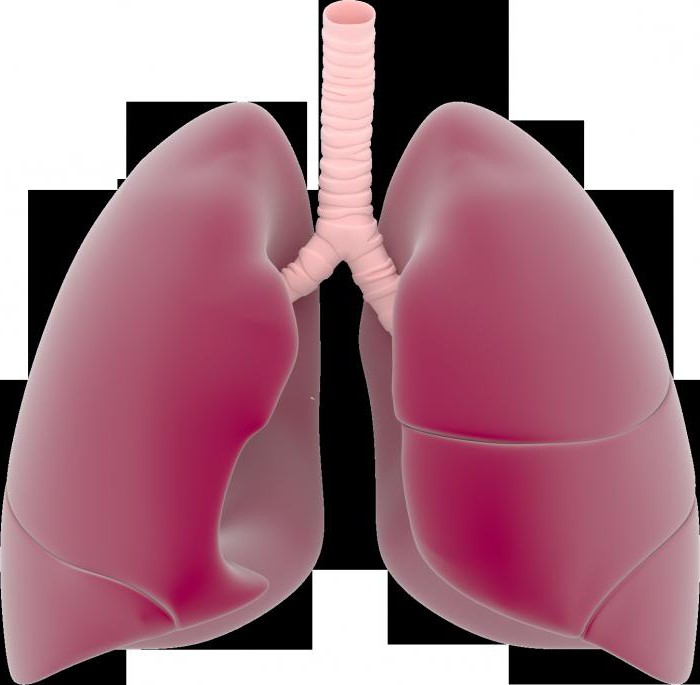 The lining of the lungs was referred to in these texts as the “hypezokos membrane.” Galen also noted tachycardia in pleurisy and described it as a “hard pulse” that was noted to be “fast and frequent.” In 1723, the term “pleurisy” came from an English translation of a text by Giorgio Baglivi in 1699. Baglivi also describes a “hardness of the pulse” as “an infallible sign of all pleurisies” and additionally mentions. “fever, spitting, and pain-in-the-side.” The more recent definition of pleurisy was by Giambattista Morgagni in 1961, who performed post-mortem examinations on patients suffering from pleurisy. He defined “pleurisy” as disease-related primarily to the pleura and “peripneumony” as disease relating to the lung tissue. Through his work, he discovered that these were not distinct entities and re-termed this “pleuripneumony.” Laennec, who invented the stethoscope, added egophony to the definition of pleurisy. Laennec also reclassified the terminology and referred to “pleuritic” to denote inflammation of the pleura and “pleurisy” to refer to the disease that caused the inflammation.
The lining of the lungs was referred to in these texts as the “hypezokos membrane.” Galen also noted tachycardia in pleurisy and described it as a “hard pulse” that was noted to be “fast and frequent.” In 1723, the term “pleurisy” came from an English translation of a text by Giorgio Baglivi in 1699. Baglivi also describes a “hardness of the pulse” as “an infallible sign of all pleurisies” and additionally mentions. “fever, spitting, and pain-in-the-side.” The more recent definition of pleurisy was by Giambattista Morgagni in 1961, who performed post-mortem examinations on patients suffering from pleurisy. He defined “pleurisy” as disease-related primarily to the pleura and “peripneumony” as disease relating to the lung tissue. Through his work, he discovered that these were not distinct entities and re-termed this “pleuripneumony.” Laennec, who invented the stethoscope, added egophony to the definition of pleurisy. Laennec also reclassified the terminology and referred to “pleuritic” to denote inflammation of the pleura and “pleurisy” to refer to the disease that caused the inflammation.
Pleural Anatomy
Two layers of pleura separate the lung and inner chest wall. Visceral pleura surrounding the lung tissue and is composed of a single mesothelial cell layer. They receive blood supply from the bronchial arteries supplying lung. The parietal pleura lines the inner chest wall, and in contrast to the visceral pleura, it contains stomata that drain pleural fluid to lymphatic capillaries in the loose connective tissue, which also contains systemic blood vessels and nerves. The lymphatics drain into their regional lymph nodes along the sternum or vertebra, and eventually into the thoracic and right lymphatic ducts. The lymphatics are 10um-12um in diameter, large enough to accommodate intact erythrocytes.
The normal volume of pleural fluid is 0.1 to 0.2 mL/kg, with an influx of 0.5 mL/hr in adults. The maximal removal rate, calculated from instilling artificial pleural effusion into a bovine model, is 0. 28 mL/kg/hr. Pleural fluid accumulates when the inflow exceeds removal (increased capillary plasma filtration) or if the rate of removal is impaired (blockage of lymphatic drainage). The normal amount of pleural fluid separates the two pleura by 10 to 20 micrometers, except at the hilum of the lung where they are contiguous. The parietal pleura has connective tissue and is innervated by sensory nerve fibers, while the visceral pleura lacks connective tissue and is innervated by the vagus nerve, hence insensitive to pain. The parietal pleura in the central diaphragmatic region is supplied predominantly by the phrenic nerve, the involvement of which may cause referred pain to the ipsilateral shoulder. The other areas of the parietal pleura are supplied by the intercostal nerves of the corresponding intercostal spaces.
28 mL/kg/hr. Pleural fluid accumulates when the inflow exceeds removal (increased capillary plasma filtration) or if the rate of removal is impaired (blockage of lymphatic drainage). The normal amount of pleural fluid separates the two pleura by 10 to 20 micrometers, except at the hilum of the lung where they are contiguous. The parietal pleura has connective tissue and is innervated by sensory nerve fibers, while the visceral pleura lacks connective tissue and is innervated by the vagus nerve, hence insensitive to pain. The parietal pleura in the central diaphragmatic region is supplied predominantly by the phrenic nerve, the involvement of which may cause referred pain to the ipsilateral shoulder. The other areas of the parietal pleura are supplied by the intercostal nerves of the corresponding intercostal spaces.
The primary function of the pleural membranes and pleural fluid is to allow for frictionless movement/sliding of the lung relative to the chest wall. On inspiration, a negative pressure caused by the outward movement of the chest cavity and the downward excursion of the diaphragm is transmitted to the pleural space leading to lung expansion. It generates a negative pressure relative to atmospheric pressure. This gradient allows atmospheric air to enter into the lungs.
On inspiration, a negative pressure caused by the outward movement of the chest cavity and the downward excursion of the diaphragm is transmitted to the pleural space leading to lung expansion. It generates a negative pressure relative to atmospheric pressure. This gradient allows atmospheric air to enter into the lungs.
90,000 Pleurisy: Symptoms, Diagnosis and Treatment
Human lungs are located in the chest cavity. Outside, they are covered with pleura. The pleura is the serous membrane that lines the inner layer of the chest cavity and envelops both lungs. The basis of the pleura is made up of mesothelial cells.
Pleurisy – an inflammatory disease of the pleural layers, which is characterized by the deposition of fibrin on their surface (fibrinous or dry pleurisy), or the accumulation of fluid in the pleural cavity (exudative pleurisy).
This disease is very common. This is the most commonly diagnosed lung pathology. In the general structure of the incidence of the population, pleurisy accounts for 5-15%.
In the general structure of the incidence of the population, pleurisy accounts for 5-15%.
Reasons
Pleurisy is a disease that in the overwhelming majority of cases develops on the basis of any existing pathology. The most common cause of the development of an inflammatory reaction in the pleural cavity is various infections. Pleurisy often occurs against the background of systemic diseases, tumors, and injuries.
Some authors refer to pleurisy and cases of pleural effusion without an obvious presence of an inflammatory response. This situation is not entirely correct, since pleurisy is an ailment that involves an obligatory inflammatory component.
The following causes of pleurisy are distinguished:
- pleural infection;
- tuberculosis;
- allergic inflammatory reaction;
- autoimmune and systemic diseases;
- chest trauma;
- exposure to ionizing radiation;
- effects of pancreatic enzymes;
- primary and metastatic tumors of the pleura.

90,019 exposure to chemicals;
Symptoms
Clinic for dry pleurisy is characterized by stitching pains in the chest, aggravated by coughing, breathing and movement. The patient is forced to take a position lying on the sore side to limit the mobility of the chest. Breathing is shallow, gentle, the affected half of the chest lags noticeably behind during respiratory movements. Body temperature sometimes rises to subfebrile values, the course of pleurisy may be accompanied by chills, night sweats, weakness.
Diaphragmatic dry pleurisy has a specific clinic: pain in the hypochondrium, chest and abdominal cavity, flatulence, hiccups, tension of the abdominal muscles.
The beginning of exudative pleurisy is accompanied by a dull pain in the affected side, a painful dry cough reflexively arising, a lag in the corresponding half of the chest in breathing, pleural friction noise. As the exudate accumulates, the pain is replaced by a feeling of heaviness in the side, increasing shortness of breath. For exudative pleurisy, general symptoms are characteristic: weakness, febrile body temperature, loss of appetite, sweating.
For exudative pleurisy, general symptoms are characteristic: weakness, febrile body temperature, loss of appetite, sweating.
Diagnostics
An external examination by a doctor is very important for the diagnosis of pleurisy and determination of its nature. With auscultation (listening to the lungs in different phases of breathing with a stethoscope), a pleural friction noise can be detected, which is specific for fibrinous pleurisy, with exudative pleurisy during percussion (tapping a certain area to identify characteristic sound phenomena), a dullness of the percussion sound over the effusion zone is noted. Thus, it is possible to determine the spread of exudate in the pleural cavity.
In general and biochemical blood tests, nonspecific inflammatory changes are noted: acceleration of ESR, increase in the number of leukocytes; the appearance or increase in the concentration of inflammatory proteins.
Instrumental methods (ultrasound, radiography) play a significant role in the diagnosis of pleurisy, as they allow you to see the affected area and determine the nature of the inflammatory process.
Treatment
Treatment is determined by the form of pleurisy. Treatment of an infectious type of pleural inflammation involves the use of antibiotics and other antimicrobial agents, diuretics, pain relievers.In the case of exudative inflammation, physiotherapy and exercise therapy can be used, but only after the effusion has resolved. If the cause of the inflammation of the pleura is pulmonary tuberculosis, anti-tuberculosis drugs are prescribed.
Treatment involves the use of symptomatic agents. If there are pleural fibrinous overlays (dry pleurisy), the patient should be provided with complete rest. In case of cough, antitussives are prescribed. Treatment often includes the setting of cans, mustard plasters, the use of anti-inflammatory drugs, and breathing exercises.
Pleural puncture may be required if there is a large accumulation of fluid.
Nutrition for pleurisy should be complete and meet physiological needs. It is required to include in the diet more foods rich in vitamins. A pleurisy diet involves limiting the intake of carbohydrates and salt. It is also required to reduce the volume of liquid drunk to 500-600 ml. As for non-infectious pleurisy, its treatment involves the elimination of the underlying disease.If there is a tumor, chemotherapy may be given.
A pleurisy diet involves limiting the intake of carbohydrates and salt. It is also required to reduce the volume of liquid drunk to 500-600 ml. As for non-infectious pleurisy, its treatment involves the elimination of the underlying disease.If there is a tumor, chemotherapy may be given.
90,000 Back pain after pleurisy. Pain in lung diseases
home
Library
Back pain treatment
Pain in lung diseases
The mucous membrane of small bronchi and lung tissue do not contain pain receptors. Lung diseases are accompanied by pain only when the pleura is involved in the pathological process. Pleural pain occurs when breathing and coughing, and can spread to the hypochondrium, neck or shoulder.It increases when bending to the healthy side (and with intercostal neuralgia, on the contrary, when bending to the painful side). The pain is stabbing, cutting, has a clear localization and is perceived as if it occurs in the skin of the chest wall. The diagnosis is made on the basis of listening to the lungs, tapping, X-ray and other studies.
Tumors of the lungs, even when they are quite large, may not cause pain. It occurs only after the tumor has invaded the pleura.
Tumors of the pleura are always accompanied by chest pain. The pain loses its connection with the act of breathing. It is persistent, sometimes painful, almost does not lend itself to painkillers, it is equally felt during the day, at night, when you hold your breath, when you cough, when you move. The pain can radiate to the shoulder. As the disease progresses, shortness of breath increases, a hacking cough joins, and the body temperature rises.
In cancer of the apex of the lung, the cervical sympathetic nerve is damaged, which is manifested by severe pain in the arms, shoulders, chest, decreased sensitivity of the skin of the hands, “creeping” in the fingers.Tumors originating from the large bronchi proceed with prolonged continuous pain in the chest.
Pneumothorax is a sudden penetration of air into the pleural cavity through a rupture in the pleura, causing the lung to collapse. The majority of patients with spontaneous pneumothorax are young men aged 25-40 years. The disease begins most often acutely, after physical exertion, for example, during childbirth, while straining in the toilet. The most common cause is a severe cough, resulting in a twenty-fold increase in intrabronchial pressure.About one in five has pneumothorax for no apparent reason. As a result of the rupture of the air “bag” in the lung, air begins to flow into the pleural cavity, which leads to collapse of the lung and respiratory disorders.
This is manifested by acute chest pain on the affected side, shortness of breath, cough. The skin is pale and moist, the pulse is fast, the blood pressure drops to the point of fainting. After a while, discomfort dulls, and the body adapts to a decrease in lung volume.
There are several variants of pneumothorax. Some are life-threatening, others hardly appear. The state of health deteriorates significantly and it becomes possible to establish the cause of chest pain when the lung collapses by at least 40-50% of the initial volume.
Lung infarction (necrosis of the lung tissue and its soaking with blood) can occur with acute blockage of the pulmonary artery by a thrombus. It is characterized by the sudden onset of chest pain on breathing, shortness of breath, and hemoptysis.The pain in the chest wall is explained by reactive inflammation of the pleura, which occurs when the dead tissue reaches the pleura.
Pulmonary embolism (PE) is a blockage of the lumen of the pulmonary artery by a thrombus, an embolus (a particle brought in with blood). Pulmonary embolism often occurs with injuries accompanied by bone fractures and massive tissue crushing. A person’s condition is determined mainly by the degree and speed of blockage of the pulmonary artery, the level of damage.Suddenly there is a sharp shortness of breath, chest pain, cyanosis, symptoms of acute heart failure increase. Death may come.
Pleurisy is an inflammation of the pleural sheets, accompanied by the formation of fibrinous overlays on their surface (dry pleurisy) or the accumulation of fluid, blood, pus in the pleural cavity (exudative pleurisy). Most often, pleurisy develops against the background of various infectious processes (tuberculosis, pneumonia, lung abscess, rheumatism), injuries, tumors.
The main symptom of dry pleurisy is pain in the side, sometimes very intense. It is aggravated by breathing, coughing, tilting the body to a healthy side. Due to severe pain, a person has to lie on his back or sore side, without moving, breathing often and shallowly. Dry cough is characteristic. The body temperature rises, there may be chills, night sweats, weakness. In many patients, there is an increased sensitivity of the muscles of the chest and back when feeling, sometimes their tension. Pain appears when the chest is squeezed from the sides and when the trunk is tilted to the healthy side.
With the accumulation of fluid in the pleural cavity (development of exudative pleurisy), the pain in the side disappears, the main symptoms are shortness of breath, a feeling of heaviness in the chest.
Pneumonia (pneumonia) is usually not painful. The exception is croupous pneumonia (pleuropneumonia), in which the pleura is necessarily inflamed. The disease begins with a sudden chill, an increase in body temperature to 39-40 C, shortness of breath and a sharp stabbing pain in the chest, usually in the lower lateral regions, aggravated by breathing, coughing, and movements.The cough is dry at first, then with “rusty” phlegm. Herpes often appears on the lips, the cheeks turn red, the nasolabial triangle turns blue.
H. Romanovskaya
“Pain in lung diseases” and other articles from the section Treatment of back pain
Read also:
Pleural puncture. Why EMC?
Patients often hear from doctors: “fluid in the pleural cavity, fluid in the lungs, around the lungs” … We are talking about pleural effusion – the accumulation of fluid in the pleural cavity formed by the chest wall, mediastinum, diaphragm and lungs.Normally, this cavity contains several milliliters of fluid, which covers the surface of the lung in a uniform thin layer, which ensures its smooth sliding relative to the chest during breathing. An increase in this amount, as a rule, is a complication or manifestation of diseases of various organs, both in the chest and outside of it.
As a rule, when visiting a general practitioner, patients complain of coughing, shortness of breath and chest pain, which is aggravated by deep breathing, coughing, and sneezing.These symptoms, as well as the data of auscultation of the lungs (listening with a phonendoscope) give reason to suspect the presence of fluid in the pleural cavity and perform an X-ray of the patient’s lungs.
When confirming the diagnosis of pleural effusion, the general practitioner may refer the patient to a phthisiatrician, pulmonologist, cardiologist, and sometimes an oncologist, who will look for the causes of its occurrence. This usually requires a pleural puncture – removal of fluid from the pleural cavity, followed by examination of the resulting sample.In addition, a puncture may be needed to facilitate breathing in those patients in whom pleural effusion causes the lung to collapse (collapse). In some cases, fluid may continue to accumulate in the pleural cavity – then the pleural puncture must be repeated.
At the EMC Surgical Clinic, it is possible to perform pleural puncture around the clock for both inpatients and outpatients.
Any pleural puncture, despite its apparent simplicity, is a responsible manipulation, since the doctor must evacuate the accumulation of fluid in the immediate vicinity of the lung.Classic puncture involves the production of a puncture with a sharp, unprotected needle. The slightest touch of the lung (when coughing, moving the patient, talking) increases the risk of pneumothorax (air entering the pleural cavity). The systems we use for thoracocentesis (puncture of the chest) provide for the introduction of a thin plastic catheter into the pleural cavity, which cannot injure the lung even when touched. If necessary, the patient can be moved, ask about his health.The catheter allows virtually all of the fluid to be aspirated. To minimize the risk of the procedure, EMC successfully uses the Covidien system, which has a specially designed mechanism that is triggered as it enters the pleural cavity and “pulls back” the lung until a plastic catheter is inserted.
We perform pleural punctures only after ultrasound examination (ultrasound), as well as, if necessary, under the control of ultrasound or computed tomography.
In the current practice of carrying out pleural puncture, the “standard points” of needle insertion are determined according to the principle “the greatest probability of getting into the liquid with the least trauma for the patient in case of failure.” In such cases, it is almost never possible to take all the liquid, in addition, according to statistics, up to 10% of complications are detected (lung injury, pneumothorax). In the process of ultrasound, we choose the optimal point of insertion of the needle, the direction of its movement bypassing the internal organs, as well as the shortest path to the liquid.Thus, it is possible to take the maximum amount of fluid with the least discomfort for the patient.
The removed fluid is subjected to cytological, bacteriological and immunological studies. In some situations, thoracoscopy with pleural biopsy may be required to accurately diagnose the cause of fluid accumulation and select the necessary treatment tactics.
In the clinical diagnostic laboratory of the multifunctional hospital EMC on the street.Shchepkin analysis can be carried out immediately after the procedure, which will allow you to quickly and accurately identify the cause of the appearance of fluid in the pleural cavity, establish a diagnosis and develop optimal treatment tactics.
90,000 Early signs of lung cancer – Dobrobut clinic
Lung cancer is a life-threatening disease; in developed countries it is the most common malignant tumor. About one million new cases are registered annually in the world.Smoking is believed to be the main cause of lung cancer.
Cigarette smoke contains dozens of carcinogens, nicotine can suppress the immune system, which protects our body. This disease requires a long and very difficult treatment precisely because it is often diagnosed at a later stage.
So that you do not miss the development of lung cancer and turn to specialists in time, we will tell you about nine early symptoms. You will also learn how we can help people at high risk of the disease.
1. A cough that does not stop
Be alert if your cough persists for a long time. A cough associated with cold weather or a respiratory infection will clear up in a week or two, but persistent, prolonged coughs can be a symptom of lung cancer.
Do not be tempted to avoid visiting your doctor. It doesn’t matter if your cough is dry or mucus-producing. See your oncologist immediately. You will be assigned the necessary examinations.
2.Change in cough
Pay attention to any changes in your chronic cough, especially if you smoke. If you are coughing more often, or your cough has become deeper, or hoarse, or you are coughing up blood, mucus, it’s time to see your doctor.
If your family members or acquaintances or friends experience such symptoms, also suggest that they visit a specialist.
3. Change in breathing
Shortness of breath is also a possible symptom of lung cancer. Breathing changes can occur if a tumor blocks or narrows the airways.
Make a note to yourself if you notice a change in breathing. If you find it difficult to breathe after climbing stairs or performing any movements that were previously easy for you, do not ignore these signs.
4. Chest pain
Lung cancer can cause chest, shoulder, or back pain that is not associated with a cough. See your oncologist if you notice any chest pains, whether sharp, pulling, persistent, or intermittent.
Note for yourself if the pain is limited to a specific area or is over the entire chest.Discomfort can result from swollen lymph nodes or metastases in the chest wall, pleura, or ribs.
5. Whistling sound
If the airway becomes narrowed, blocked, or inflamed, the lungs produce a whistling sound when you breathe. This sound can also be associated with a benign disease that is easily treatable. However, it can also be a symptom of lung cancer. Therefore, be careful, do not try to calm yourself down and assume that “it will pass by itself.”Visit your oncologist to find out the cause.
6. Hoarse voice
If you yourself notice significant changes in your voice, or someone tells you that your voice began to sound hoarse, do not postpone your visit to the doctor.
Hoarseness can be caused by a simple cold, but it can indicate a serious illness if it persists for more than two weeks. Hoarseness associated with lung cancer occurs when a tumor acts on the nerve that controls the larynx.
7.Weight loss
Unexplained weight loss of 5 kg or more may be associated with lung cancer or other types of cancer. Don’t blame your weight gain on your dream of losing a few extra pounds. Such a decrease should be the reason for a visit to the oncologist.
8. Bone pain
Lung cancer that has spread to the bones can cause back pain
or other parts of the body; pain worse at night. Sometimes it is difficult to tell if bones or muscles hurt.Bone pain is often at night and gets worse if you move.
In addition, lung cancer is sometimes associated with pain in the shoulder, arm, or neck, although this is less common. Be attentive to your pain and discuss it with your oncologist.
9. Headache
Headaches can be a sign that lung cancer has spread to the brain. However, not all headaches are associated with brain metastases.
Sometimes a lung tumor can put pressure on the superior vena cava.It is a large vein that transports blood from the upper body to the heart.
And now the answer to the main question – what to do.
Simple screening can help.
Be aware that a chest x-ray is not effective in detecting lung cancer early.
Special studies have shown that low-dose computed tomography reduces lung cancer mortality by 20 percent.
Who do we recommend to have a CT of the lungs? People with a high risk of the disease:
- 20 years or more of smoking history;
- work in hazardous industries.
90,019 age from 50 to 80 years old – regardless of smoking;
90,019 smoking in the past 10 years;
If you experience any of the symptoms listed above or meet any criteria that apply to people at high risk, see a clinical oncologist. Talk with your healthcare professional about screening with low-dose computed tomography.
At the Onco Consulting Center you will be examined safely and comfortably using world-class equipment. Low-dose CT screening can be very beneficial to you.
Sign up for a consultation: 0-800-75-60-65; 067-41-461-31; 095-285-98-00; 073-262-98-00.90 017 90 000 Pleural mesothelioma – Clinics of Lyadov
Treatment of pleural mesothelioma
Pleural mesothelioma grows from the cells of the serous membrane of the lungs, is very rare: 100-200 times less common than lung cancer. In most cases, the cause of the development of the disease – is inhalation of asbestos, so people who work with this mineral usually get sick.
For the treatment of pleural mesothelioma, our doctors use all modern technologies: high-precision surgical techniques for tumor removal, chemotherapy with the latest drugs, immunotherapy, targeted therapy.This allows you to maximally preserve the functions of the respiratory system and alleviate the patient’s condition.
We understand how important it is to start treatment as soon as possible: cancer patients are admitted by appointment without waiting in line. You can go to the oncologist the very next day after the call, start therapy within 5-7 days if the necessary tests are available. A team of oncologists, radiologists, chemotherapists, and rehabilitation therapists works with each patient.
Signs of pleural mesothelioma
The first symptoms of pleural mesothelioma may be general weakness, a slight increase in temperature, and weight loss.When the lung tissue is already affected, a cough appears, sometimes with bloody sputum, with pleurisy – shortness of breath, pain in the chest area. Also, mesothelioma is often accompanied by joint damage, bone pain.
In these cases, you should consult a doctor as soon as possible to clarify the diagnosis. At the Clinic of Oncology, you will be able to undergo the necessary examinations in a short time: from the first visit to the doctor until the diagnosis is made, it usually takes no more than 7 days.
Stages and types of pleural mesothelioma
There are three types of neoplasms:
- epithelioid – occurs most often, up to 70% of cases;
- sarcomatous – about 10% of cases;
- mixed – approx. 20-25%.
According to the prevalence of the process, four stages of pleural and lung mesothelioma are distinguished: on the first it affects only one side of the outer layer of the organ, on the latter it spreads throughout the chest and gives metastases to distant organs.
We treat pleural mesothelioma of any type and at any stage, choosing an effective treatment at a consultation with the participation of doctors of specialized specializations. Even difficult cases are now treatable using modern chemotherapy and surgery techniques.
How we can help with pleural mesothelioma
We offer compulsory medical insurance treatment in accordance with international standards. In each case, we conduct a consultation with the participation of oncologists, surgeons, radiologists and chemotherapists.
We combine surgical treatment with chemotherapy and immunotherapy to achieve the best possible result and improve the patient’s quality of life.
Consequences of pleural mesothelioma
Without treatment, pleural mesothelioma progresses from stage one to stage four.The later therapy is started, the more difficult it is to cope with the disease. Comprehensive treatment can improve the prognosis and increase the patient’s life expectancy.
Remember that while we have learned to help patients with advanced cancer, starting treatment early will help you cope with the disease faster and easier.
Diagnosis of pleural mesothelioma
Chest X-ray can only tentatively suspect the presence of a tumor.We use modern diagnostic techniques for pleural mesothelioma to make an accurate diagnosis:
- MRI, CT – basic examination methods for assessing the shape and size of the tumor, tissue changes.
- PET / CT – Detailed examination of the neoplasm and detection of metastases from 2 mm.
- Thoracocentesis or percutaneous biopsy with histology – Collection of pleural fluid or tumor tissue to determine the type of cancer cells and their malignancy.
- Diagnostic thoracoscopy – examination of the pleural cavity using an endoscope. Allows you to accurately take a biopsy, assess the size of the tumor and its operability.
The oncologist can prescribe other tests or examinations for you: each case is unique, an individual diagnostic scheme is needed to make an accurate diagnosis.
Treatment of pleural mesothelioma
We select the treatment taking into account the severity of the disease and the patient’s condition.We not only treat the disease, but also preserve the quality of life of our patients after therapy:
- Surgical treatment – The scope of the intervention depends on the stage of the cancer. Remove the affected part of the pleura and lung, sometimes the lymph nodes of the mediastinum, part of the diaphragm and pericardium.
- Chemotherapy – An obligatory component of complex treatment, it can improve the prognosis.
- Palliative care – removal of exudate from the pleural cavity, pleurodesis and other techniques that help improve the patient’s quality of life.
What is the difference between the treatment of pleural mesothelioma in the “Clinic of Oncology of the XXI century”
- Multidisciplinary hospital with the possibility of treating concomitant diseases.
- The latest surgical equipment allows you to perform the most complex interventions on the chest.
- Modern drugs for polychemotherapy with low toxicity.
Rehabilitation after surgery
Rehabilitation after complex operations to remove pleural tumors is needed to return to an active life.The rehabilitation department has developed a comprehensive recovery method based on breathing exercises, exercise therapy and physiotherapy.
Advantages of contacting the “Clinic of Oncology of the XXI century”
- Individual selection of treatment taking into account the diagnosis and patient’s condition
- Treatment according to international standards: NCCN, UpToDate, ESMO, NCI.
- More than 1000 patients satisfied with the quality and treatment
- Follow-up by an oncologist in an outpatient department
Comfort at the level of private clinics: single and double rooms with toilet and shower, three meals a day.
ultrasound of lungs
Ultrasound examination of the lungs is a completely safe and affordable procedure. As a rule, patients are boldly sent for diagnostic manipulation, since it is completely painless. Ultrasound is more affordable than fluorography or radiography – unlike these examinations, ultrasound can even be performed on children or pregnant women. Note that the procedure is not a key one, but is assigned only under certain circumstances.This is due to the fact that this is difficult to study with ultrasound, since the lungs are filled with air and are located behind the ribs.
When is ultrasound of the lungs indicated
Ultrasound examination of the respiratory organ is a rather laborious procedure, therefore it is not carried out for preventive purposes, but only according to the testimony of a doctor. If you experience disturbing symptoms, see your doctor first. In most cases, diagnostics are assigned in the following cases:
- Pain in the chest;
- Feeling of lack of air;
- Coughing up phlegm of strange color or consistency;
- Fever and cough;
- Suspected inflammatory process in the lungs;
- Postponed chest injuries.
- Wheezing while listening to the lungs;
- Suspected cancer;
- Suspicion of a foreign body in the respiratory organ.
Carrying out an ultrasound examination of the lungs is advisable in cases where other research methods are not available. For example, if we are talking about a small child or a pregnant woman. If there are alarming symptoms that indicate a pathological process in the lungs, ultrasound is prescribed to begin with, since this method is the safest for the body.
Ultrasound is often prescribed to clarify the pathology detected during X-ray – fluid in the lungs, neoplasms, changes in the lymph nodes.
Also manipulation can be assigned to control and track dynamics during treatment. For example, in case of chronic or long-term diseases (for example, bilateral pneumonia or pleurisy), it is not recommended to take x-rays too often – this is very harmful to the body and is fraught with various consequences.However, it is imperative to monitor how the treatment proceeds. For this, ultrasound is used.
Advantages and disadvantages of ultrasound of the lungs
Each medical procedure has its pros and cons. As for the ultrasound examination of the respiratory organs, the following advantages can be distinguished:
- Accessibility of the procedure;
- Safety and harmlessness, proven by tests;
- Non-invasiveness;
- No pain or discomfort;
- No direct contraindications.
Of the shortcomings, one can single out the fact that this technique is not highly informative, since the organ is filled with air and is closed by the chest. Also, the disadvantages include the impossibility of a preventive examination.
Contraindications
A significant advantage of this technique is the absence of contraindications. For this reason, absolutely anyone can undergo an ultrasound of the lungs: adults, children, pregnant and lactating women. Even the presence of pacemakers, metal teeth and other foreign bodies in the body does not interfere with the study as many times as necessary.
Do I need to prepare for the procedure
The respiratory organ has nothing to do with the food system. Therefore, before the diagnosis, you do not need to follow special dietary rations; you can have breakfast in the morning. However, if the patient is tormented by a strong cough or profuse thick sputum, a specialist may prescribe various expectorant drugs just a couple of hours before the examination. This issue is decided on an individual basis by the attending physician.
How the diagnostics are carried out
Ultrasound examination of the lungs is performed in a standard way.The patient should take off the clothes above the waist, tuck the hair into a ponytail (if the hair is long) and remove all jewelry from the neck. Next, the ultrasound doctor applies a small amount of a special gel containing silicone to the study area. Then the doctor moves the sensor over the chest area, examines the image and, based on it, gives a conclusion.
If, during the diagnosis, a liquid is found in the cavity, which complicates the study, the examinee is asked to take a different position, which provides a better visibility of the organ.On average, the procedure takes about 20-30 minutes.
Norm of lungs by ultrasound
If there are no pathological processes associated with the respiratory organs in the body, the following indicators should be indicated in the study protocol:
- A thin layer of subcutaneous adipose tissue normally has homogeneous hypoechoicity.
- Hypoechoic layers of muscle fibers of the chest.
- Anechoic stripe of the pleural cavity, in which there may be a different content of exudate.
- The lung tissue should be of medium density and uniform structure.
During ultrasound examination of the lungs, various ailments can be detected. For example, metastases and neoplasms of a different nature arise at the level of the lung tissue in the form of dense formations. Their contours are uneven, but clearly visible. In large neoplasms, doctors notice blood flow.
The inflammatory process in the respiratory organ is found in the form of foci of increased density, their contours are uneven and indistinct, a dark spot is noticeable on ultrasound.Tuberculosis may look the same if its focus is close to the pleura.
A lung abscess occurs in the form of a cavity with smooth and clear walls. There may be liquid inside the cavity (the volume depends on the pathology). Pleural fluid in a large volume can signal the presence of pleurisy, hydrothorax, or hemothorax. To confirm these ailments, a pleural puncture is performed under ultrasound control.
Cavernous tuberculosis, as well as parasitic pathological processes, look like cavities inside the lung tissue.
The presence of air in the pleura is visualized on ultrasound in the form of an expanded pleural region, while the respiratory organ is clearly localized at the root.
To notice possible abnormalities on an ultrasound examination, only a highly qualified ultrasound doctor should carry out diagnostics. An experienced person should also be involved in the interpretation of the results.
If you are referred for an ultrasound examination of the lungs, do not under any circumstances refuse the examination.With the help of ultrasound, it is possible to identify many pathological processes, establish an accurate diagnosis and determine further treatment tactics. Remember that any disease is amenable to conservative therapy only if it is about the initial stage of the disease.
Tuberculosis
Tuberculosis is a chronic infection caused by the bacteria Mycobacterium tuberculosis complex. When tuberculosis mycobacteria are affected, the respiratory organs are most often affected, in addition, tuberculosis of bones and joints, urogenital organs, eyes, peripheral lymph nodes occurs.Diagnosis of tuberculosis consists in conducting a tuberculin test, X-ray examination of the lungs, identifying mycobacterium tuberculosis in sputum, washings from the bronchi, detachable skin elements, additional instrumental examination of organs affected by tuberculosis. Treatment of tuberculosis is a complex and long-term systemic antibiotic therapy. Surgical treatment is carried out according to indications.
Classification of tuberculosis
Tuberculosis is distinguished into primary and secondary.Primary, in turn, can be prelocal (tuberculous intoxication in children and adolescents) and localized (primary tuberculosis complex, which is a focus at the site of infection, and tuberculosis of the intrathoracic lymph nodes).
Secondary tuberculosis differs in localization into pulmonary and non-pulmonary forms. Pulmonary tuberculosis, depending on the prevalence and degree of damage, is miliary, disseminated, focal, infiltrative, cavernous, fibrous-cavernous, cirrhotic.Caseous pneumonia and tuberculoma are also distinguished. Tuberculous pleurisy, pleural empyema and sarcoidosis were identified as separate forms.
Outside the lungs, there is tuberculosis of the brain and spinal cord and meninges, tuberculosis of the intestines, peritoneum, mesenteric lymph nodes, bones, joints, kidneys, genitals, mammary glands, skin and subcutaneous tissue, eyes. Sometimes other organs are affected. In the development of tuberculosis, phases of infiltration, decay, seeding, resorption, compaction, scarring and calcification are distinguished.With regard to the isolation of bacteria, there is an open form (with the isolation of bacteria, MBT-positive) and closed (without isolation, MBT-negative).
Symptoms of tuberculosis
Due to the multiplicity of clinical forms, tuberculosis can manifest itself in a wide variety of symptom complexes. The course of the disease is chronic, usually begins gradually (for a long time it can be asymptomatic). Over time, symptoms of general intoxication appear – hyperthermia, tachycardia, weakness, decreased performance, loss of appetite and weight loss, sweating.With the progression of the infection and its spread throughout the body, intoxication can be quite intense. Patients significantly lose weight, facial features sharpen, a painful blush appears. The body temperature does not rise above subfebrile numbers, but it lasts for a long time. Fever occurs only in the case of a massive lesion.
- Pulmonary tuberculosis, as a rule, is accompanied by a cough (initially dry), aggravated at night and in the morning. A persistent cough for more than three weeks is an alarming symptom, and in such cases, it is imperative to consult a doctor.With the progression of the disease, hemoptysis may appear. Pulmonary tuberculosis can be complicated by a life-threatening condition called pulmonary hemorrhage.
Tuberculosis of other organs and systems occurs much less frequently and is detected, as a rule, after the exclusion of other pathologies.
- Tuberculosis of the meninges and brain. It develops gradually over 1-2 weeks, most often in children and people with immunodeficiency, in patients with diabetes mellitus. Initially, in addition to symptoms of intoxication, sleep disorders and headaches appear, from the second week of the disease vomiting joins, the headache becomes intense and persistent.By the end of the first week, meningeal symptoms (stiff neck, Kernig and Brudzinsky symptoms), neurological disorders are noted.
- Tuberculosis of the digestive tract is characterized by a combination of general intoxication with stool disturbance (constipation alternating with diarrhea), symptoms of dyspepsia, abdominal pain, and sometimes bloody impurities in the feces. Bowel tuberculosis can contribute to the development of obstruction.
- Tuberculosis of bones, joints and spine.With tuberculosis of the joints, symptoms of arthritis are noted (pain in the affected joints, restriction in mobility), With damage to the bones, their soreness, a tendency to fracture is noted.
- Tuberculosis of the genitourinary system. With the localization of the focus of infection in the kidneys, patients note the symptoms of nephritis, back pain, and blood in the urine may appear. Quite rarely, tuberculosis of the urinary tract can develop, in this case, manifestations will be dysuria (violation of the urination process), pain during urination.Genital tuberculosis (genital tuberculosis) can cause infertility.
- Tuberculosis of the skin is characterized by the appearance of dense nodules under the skin, with the progression of enlarging and opening onto the skin with the release of white cheesy masses.
Complications of tuberculosis
Pulmonary tuberculosis can be complicated by hemoptysis and pulmonary hemorrhage, atelectasis, pneumothorax and cardiopulmonary insufficiency.In addition, tuberculosis can contribute to the occurrence of fistulas (bronchial and thoracic, other localization in extrapulmonary forms), organ amyloidosis, and renal failure.
Diagnosis of tuberculosis
Since tuberculosis is often asymptomatic at first, preventive examinations play a significant role in its diagnosis. Adults annually need to perform chest fluorography, children – a Mantoux test (a method of tuberculin diagnostics, which reveals the degree of infection of the body with a tubercle bacillus and tissue reactivity).The main method for diagnosing tuberculosis is X-ray of the lungs. In this case, foci of infection can be detected, both in the lungs and in other organs and tissues.
To determine the pathogen, sowing of sputum, bronchial and stomach washings, separated from skin formations, is performed. If it is impossible to sow bacteria from biological materials, we can talk about the ICD-negative form. Laboratory test data are nonspecific and indicate inflammation, intoxication, sometimes (proteinuria, blood in the feces) may indicate the localization of the focus.However, a comprehensive study of the state of the body in tuberculosis is important when choosing treatment tactics.
In some cases, CT of the lungs, immunological tests, bronchoscopy with biopsy, and lymph node biopsy are performed to clarify the diagnosis. If an extrapulmonary form of tuberculosis is suspected, they often resort to a more in-depth than Mantoux tuberculin diagnosis – the Koch test. Neurologists often diagnose tuberculous meningitis or encephalitis. The patient is examined using rheoencephalography, EEG, CT or MRI of the brain.To isolate the pathogen from the cerebrospinal fluid, a lumbar puncture is performed.
With the development of tuberculosis of the digestive system, it is necessary to consult a gastroenterologist, ultrasound of the abdominal organs, coprogram. Tuberculosis of the musculoskeletal system requires appropriate X-ray studies, CT of the spine, arthroscopy of the affected joint. Additional methods of examination for tuberculosis of the genitourinary system include ultrasound of the kidneys and bladder. Patients with suspected skin tuberculosis need to consult a dermatologist.
Prognosis for tuberculosis
At present, in most cases, with timely detection and adherence to the necessary therapeutic measures, the prognosis is favorable – tuberculosis foci heal and clinical signs subside, which can be considered clinical recovery. After treatment, scars, areas of fibrosis, encapsulated foci containing bacteria in a dormant state may remain at the site of localization of foci. If the condition of the body worsens, the disease may recur, therefore, after clinical cure, patients are registered with a phthisiatrician and are regularly examined.After transferring and curing tuberculosis, the tuberculin test remains positive.
In the absence of treatment or non-compliance with recommendations, mortality from tuberculosis reaches 50% of cases. In addition, the prognosis worsens in the elderly, HIV-infected and people with diabetes.
Prevention of tuberculosis
Preventive measures carried out by specialized anti-tuberculosis medical institutions together with general medical institutions include preventive examinations of citizens (mandatory annual fluorography), identification of patients suffering from open forms of tuberculosis, their isolation, examination of contact persons, specific prevention of tuberculosis.
Specific prophylaxis (vaccination) is aimed at the formation of anti-tuberculosis immunity, includes the introduction of the BCG vaccine or prophylactic chemicals.

 If your doctor wants to rule out other problems, they may send you for an X-ray, a CT scan, or an ultrasound. These images can show if it’s pleurisy that’s causing your pain.
If your doctor wants to rule out other problems, they may send you for an X-ray, a CT scan, or an ultrasound. These images can show if it’s pleurisy that’s causing your pain.